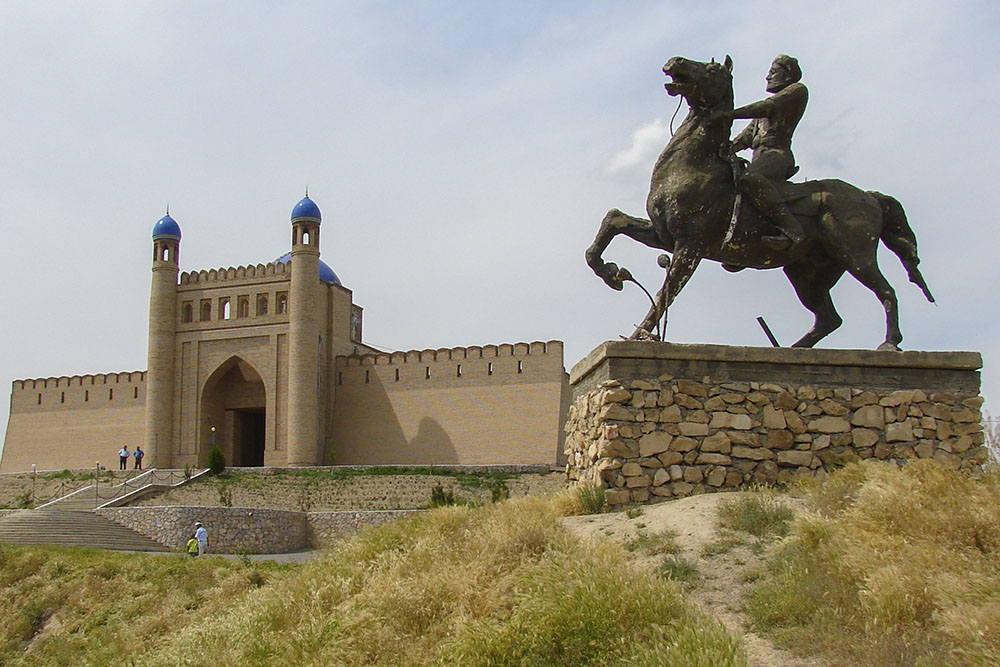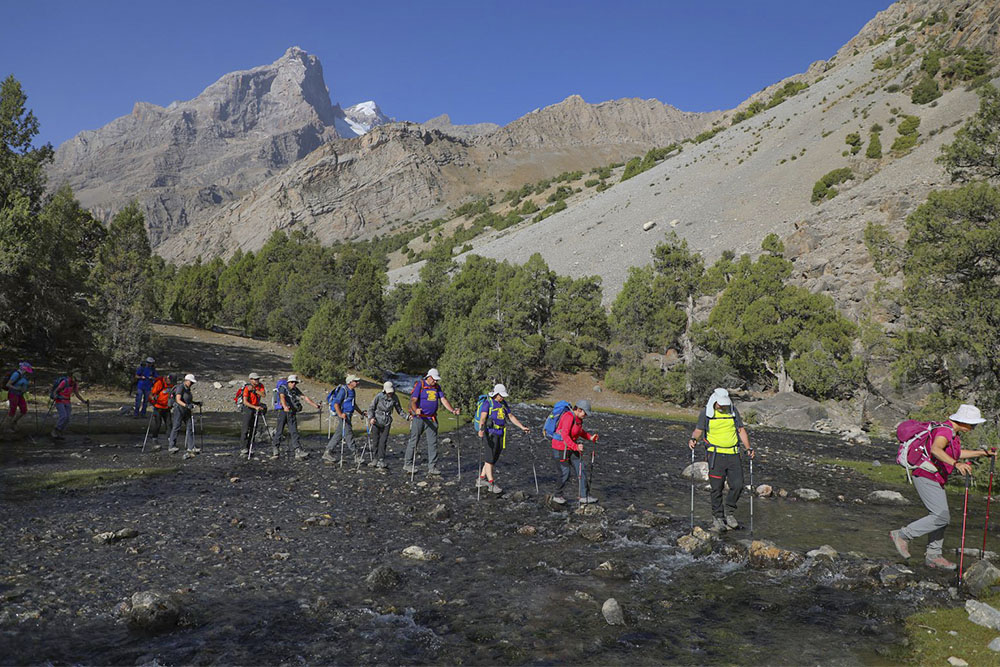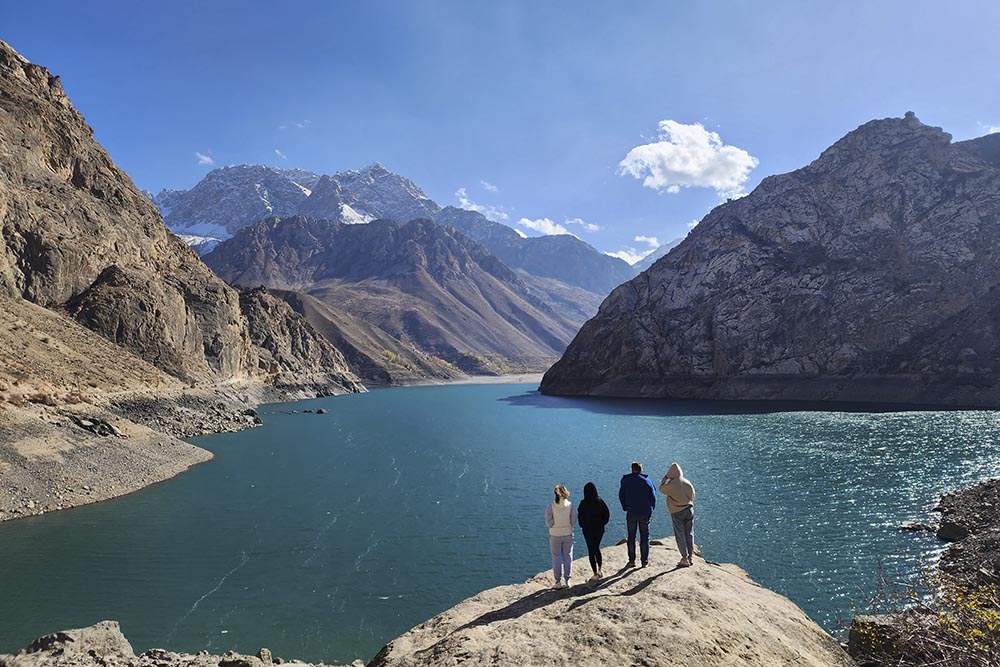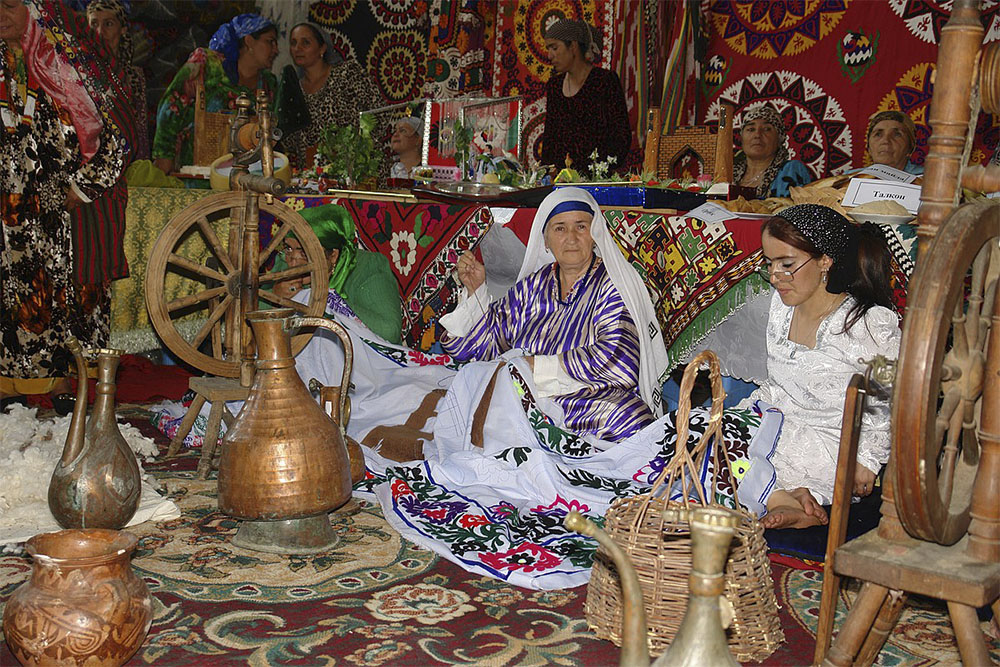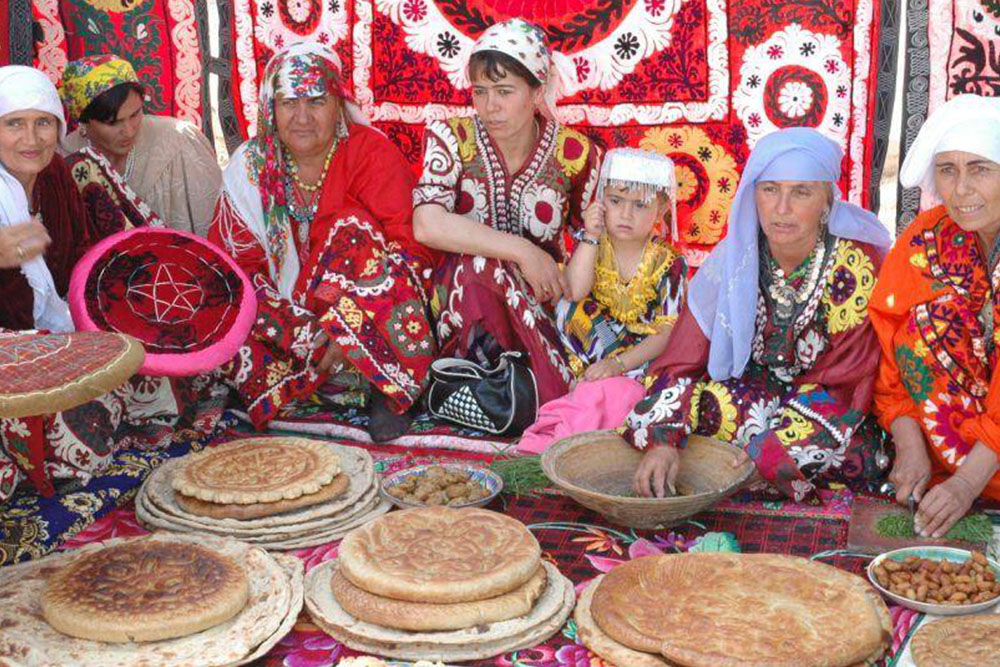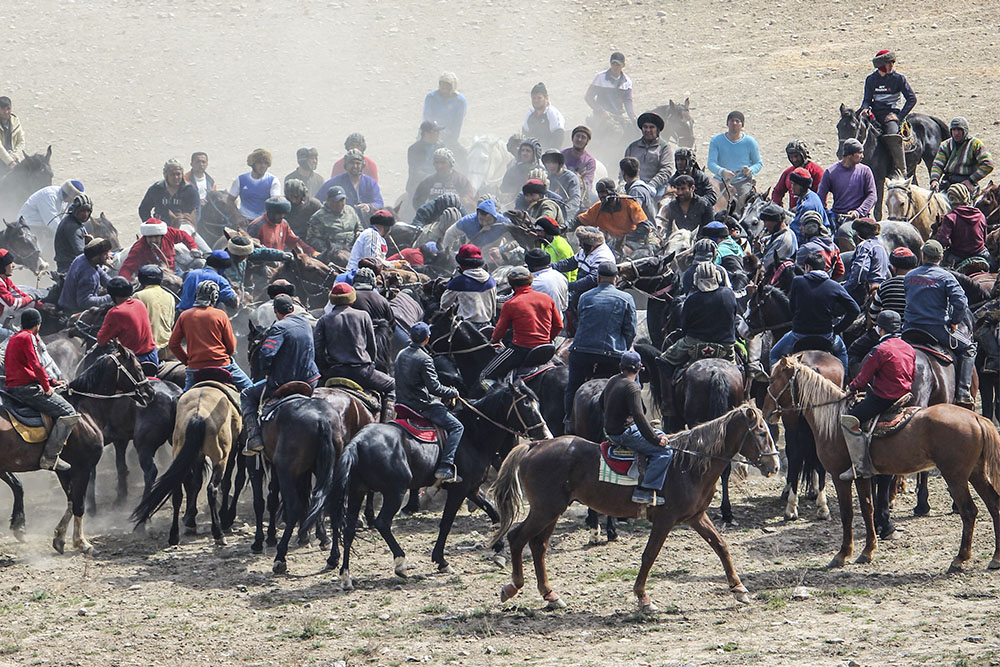Tajikistan is a young independent state lying in the South-East part of Central Asia. It adjoins Uzbekistan and Kyrgyzstan on West and North, and borders on China on East and South. It has a land area of 143,000 square kilometres and a populations of about 6 million people (among them Tajiks make 62%, Uzbeks - 24%, Russians - 8% and others - 4%). A significant part of the population is young: approximately 50% are of age under 20. About 67% of the population lives in rural area. The vast majority of the population lives in well-irrigated valleys which enjoy a relatively mild climate.
The capital city of Tajikistan is Dushanbe - a city of over 600,000 people.
Climate: extreme continental with air temperature ranging between +20oC and 0oC in January and 0oC to +30o C in June - depending on altitude. Annual rainfall varies between 150 mm and 250 mm.
The official language is Tajik (Farsi) attributed to the group of Persian languages. Russian is widely spoken and English is now being taught throughout the country.
Mountains occupy 93% of the territory and more than a half of the country is located at the altitude of more than 3,000 meters. The highest Central Asia"s peaks including Communism Peak (7,495 m), and Lenin Peak (7,134 m) are there.
The unusual climatic range has fostered a rich flora and fauna. There are more than 5,000 species of plants and flowers, while mammals include bear, fox, lynx, marten, snow leopard and wolf, many of them (including the Bukhara deer) indigenous. The valleys of the rivers Vaksh and Pyandj are well-stocked with brushwood deer, and the Pamirs are the ancient home of the wild ram
Tajikistan"s greatest potential for expansion, however, perhaps lie in the country"s very considerable mineral and energy resources.Tajikistan is mining substantial amounts of gold, silver and non-ferrous metals as well as high-valued non-metallic, gemstones and marble.
The country is justly renowned for precious and semi-precious stones, including Pamir lazurite, lapis lazuli, rubies, amethysts, spinels and many forms of ornamental quartz.
The hydropower station at Nurek, on the Vaksh river 80 km east of Dushanbe, is the largest in Central Asia and one of the largest in the world. The dam, 300 meters high, is among the highest in the world, holding some 10,000 million cubic meters of water.
Tajikistan can rightfully claim to be a four - fuel economy.
The largest industrial enterprise in the country (an annual capacity of 500,000 tones of aluminium) is the huge aluminium smelter at Tursunzade.
While agriculture is centred around cotton, silk, fruits, nuts and vegetables, Tadjikistan is also a leading producer of geranium oil for use in perfumes, and famous for it"s mineral water deposits, many of which remain relatively untapped.
The major proportion of light industry is given over to the production of garments and textiles, including cotton and silk, sewn and knitted wear, hosiery and shoes.
The strong influence of the Persian tradition in Tajik culture lives on in the weaving of carpets - the factory at Kayzakkum is the largest of its kind in the former Soviet Union.
A wide range of porcelain goods is also produced.
The potential for tourism and leisure is excellent, and the Tajiks are keen to share the natural beauty and contrasts of their country, and their rich and ancient culture, with holiday-makers and businessmen alike. Whether embarking on a cultural visit to Tajikistan (and its neighbouring cities of Samarkand and Bukhara), or trekking and mountaineering in the remote and unspoiled Pamirs, visitors will find much to enjoy.

 Centralasia Adventures
+998781506280
Centralasia Adventures
+998781506280
28, Mukanna str.
Uzbekistan
Tashkent region
100070




